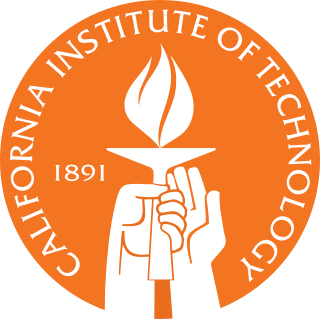
The California Institute of Technology (branded as Caltech) is a private research university in Pasadena, California. The university is known for its strength in science and engineering, and is among a small group of institutes of technology in the United States which is primarily devoted to the instruction of pure and applied sciences. Caltech is ranked among the best academic institutions in the world and is among the most selective in the U.S.

The Faculty of Science at the University of Copenhagen houses 12 departments, including the Natural History Museum of Denmark. The faculty also encompasses several national and international research centres, and has a number of field stations in Denmark and Greenland, among them the university's Arctic Station in central West Greenland. The faculty's administration is housed at the university's Frederiksberg Campus.
The College of Engineering is the engineering school of Texas A&M University in College Station and is home to more than 15,000 engineering students in 14 departments.

The College of Liberal Arts and Sciences (LAS) is the largest college of the University of Illinois Urbana-Champaign. The college was established in 1913 through the merger of the College of Literature and Arts and the College of Science. The college offers seventy undergraduate majors, as well as master's and Ph.D. programs. As of 2020, there are nearly 12,000 undergraduate students and 2,500 graduate students attending the College of Liberal Arts and Sciences.

Tarbiat Modares University is an exclusively graduate university with its main campus in Tehran, Iran. It was founded in 1982 and is among the top universities in Iran. Tarbiat Modares University (TMU) is an exclusively graduate university in Iran and was founded to train university professors. Admission is through national-level university exams and in most programs is limited to top performers.

The University of Mazandaran is a state university located in Mazandaran province of Iran, headquartered in the city of Babolsar.

Sokoine University of Agriculture (SUA) is a public university in Morogoro, Tanzania, specializing in agriculture. The university is named after the country's second prime minister Edward Sokoine.

The College of Natural Science (NatSci) at Michigan State University is home to 27 departments and programs in the biological, physical and mathematical sciences.
The College of Arts and Sciences (CAS) is one of the eleven degree-granting units of the University of the Philippines Los Baños. It is the largest college in University of the Philippines System which offers most of the general education subjects required of UPLB students, as well as the highest number of degree programs in the University. The Philippines' Commission on Higher Education has recognized CAS as a Center of Excellence in Biology, Chemistry, Information Technology and Mathematics, as well as a Center of Development in Physics and Statistics.
Charles Rogers Doering was a professor of mathematics at the University of Michigan, Ann Arbor. He is notable for his research that is generally focused on the analysis of stochastic dynamical systems arising in biology, chemistry and physics, to systems of nonlinear partial differential equations. Recently he had been focusing on fundamental questions in fluid dynamics as part of the $1M Clay Institute millennium challenge concerning the regularity of solutions to the equations of fluid dynamics. With J. D. Gibbon, he notably co-authored the book Applied Analysis of the Navier-Stokes Equations, published by Cambridge University Press. He died on May 15, 2021.

Indian Institute of Science Education and Research, Thiruvananthapuram is an autonomous public university located in Thiruvananthapuram, India. The institute is one of the seven IISERs established by the Ministry of Human Resource Development, Government of India, to bridge the gap between research and basic sciences' education at the undergraduate level. The six other IISERs are IISER Bhopal, IISER Kolkata, IISER Mohali, IISER Pune, IISER Tirupati and IISER Berhampur. All IISERs were declared as Institutes of National Importance by the Parliament of India in 2012 through the NIT Amendment Act.

Indian Institute of Science Education and Research, Bhopal is an autonomous public university in Bhauri, Bhopal district, Madhya Pradesh, India. It was established by the Ministry of Human Resource Development, Government of India in 2008 in order to incorporate research in basic science at undergraduate and graduate level, with equal emphasis on higher education for research and education in science. It is an autonomous institution awarding its own degrees.
The College of Science, Mathematics, and Technology was the science college of the former (1992-2015) University of Texas at Brownsville. It consisted of six academic departments. The six departments employ diverse faculty members - many of whom are leading experts in the fields - who have received funding from a variety of funding agencies, including the National Science Foundation, the National Institutes of Health, the Department of Education, and the Department of Defense, among others. The average active ongoing external funding is about 25-30 million dollars. In 2002 the Center for Gravitational Wave Astronomy (CGWA) research center was founded to help "develop excellence in research and education in areas related to gravitational wave astronomy."

The College of Science at the University of Utah is an academic college of the University of Utah in Salt Lake City, Utah. The college offers undergraduate and graduate degrees in biology, chemistry, mathematics, physics, and astronomy.








